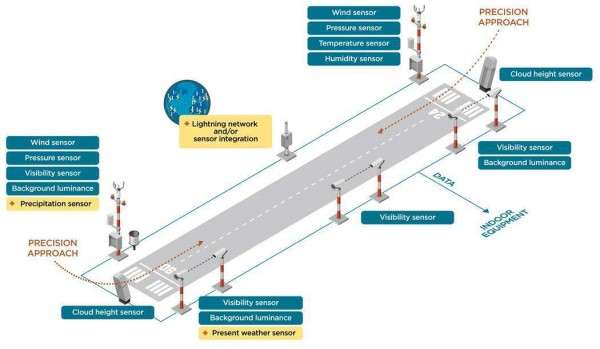What is AWOS in Aviation? A Complete Guide to the Automated Weather Observing System
In the ever-dynamic world of aviation, accurate and real-time weather data is not just important — it’s essential. This is where AWOS (Automated Weather Observing System) comes into play. AWOS is a fully automated system that delivers continuous weather reports, crucial for safe and efficient flight operations. Whether you’re a pilot, air traffic controller, or aviation enthusiast, understanding AWOS is key to grasping how modern aviation maintains safety in all weather conditions.
What is AWOS?
AWOS stands for Automated Weather Observing System. It is a collection of sensors and communication systems installed at airports that provide real-time meteorological data. The system is designed to measure and broadcast important weather information such as:
- Wind speed and direction
- Temperature and dew point
- Visibility
- Altimeter setting (barometric pressure)
- Sky condition and cloud height
- Precipitation and thunderstorm activity (in advanced models)
These observations are transmitted to pilots via radio frequencies, telephone hotlines, and digital platforms, enabling data-driven decision-making during critical flight phases like takeoff and landing.

Why is AWOS Important in Aviation?
1. Enhances Flight Safety
AWOS provides continuous and reliable weather updates, which are critical for:
- Calculating takeoff and landing performance
- Determining approach and departure procedures
- Avoiding hazardous weather conditions
2. Supports Airport Operations
For airport authorities and air traffic controllers, AWOS helps streamline operations by reducing the need for manual weather observation, particularly at non-towered or remote airports.
3. 24/7 Availability
Unlike human observers, AWOS works around the clock, delivering uninterrupted data regardless of time or staffing levels.
4. Improves Pilot Awareness
AWOS data gives pilots accurate insights into current conditions, improving situational awareness and overall decision-making during flight planning and execution.
Types of AWOS Systems
AWOS comes in several configurations, each offering different levels of weather reporting capability. Here’s a breakdown of the most common types:
| AWOS Type | Features |
|---|---|
| AWOS-A | Provides only altimeter setting |
| AWOS-1 | Altimeter + Wind speed/direction + Temperature/Dew Point |
| AWOS-2 | Adds visibility measurement |
| AWOS-3 | Adds cloud ceiling and sky condition |
| AWOS-3PT | Adds precipitation identification and thunderstorm detection |
| AWOS-4 | Includes advanced sensors like freezing rain detection |
🔍 Tip: Airports and pilots typically prefer AWOS-3 or higher for complete weather situational awareness.
How Pilots Access AWOS Information
AWOS broadcasts can be accessed through various channels:
- VHF Radio: Most AWOS systems transmit over a dedicated VHF frequency.
- Telephone: Pilots can call a designated number to hear the latest weather report.
- Online Portals: Many airports and aviation weather services publish AWOS data in real time.
AWOS vs ASOS: What’s the Difference?
While AWOS and ASOS (Automated Surface Observing System) are similar, there are slight differences:
- AWOS is generally operated by state aviation departments or airport authorities, often found at smaller airports.
- ASOS is a joint system operated by the FAA, NOAA, and National Weather Service, typically at larger airports.
ASOS systems often have more advanced sensing capabilities and undergo more rigorous maintenance procedures.
Conclusion
The Automated Weather Observing System (AWOS) is a cornerstone of modern aviation safety. By delivering consistent, automated, and precise weather data, AWOS empowers pilots and air traffic controllers to make informed decisions — even in the most challenging conditions. As aviation technology continues to evolve, AWOS remains a trusted companion in the skies, ensuring that flight operations are guided by the most accurate environmental data available.


